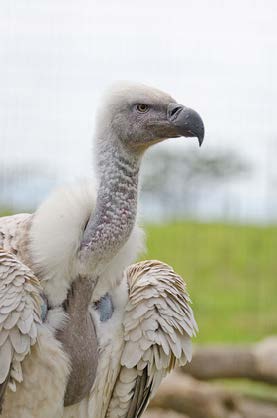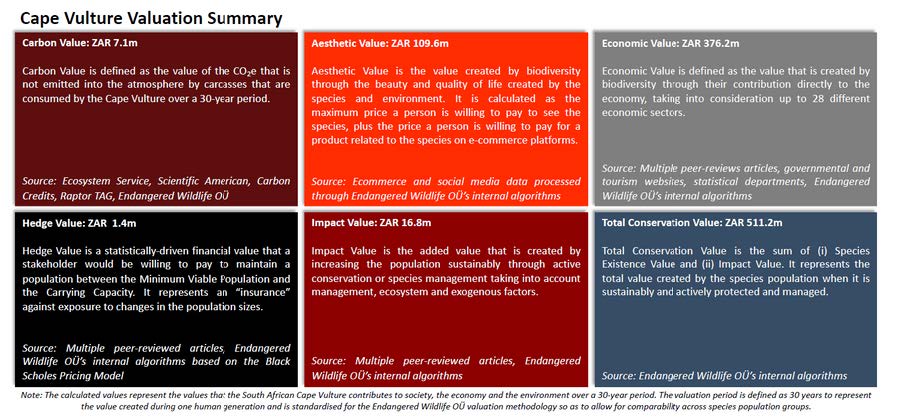AGRICULTURE NEWS - The Cape Vulture (Gyps coprotheres) is one of 23 global vulture species. The species is only distributed in limited regions of Southern Africa and, based on the 2021 IUCN assessment, is facing decreasing population trends.
The population was first assessed as Threatened in 1988 before being labelled Vulnerable in 1994. In 2015, it was raised to Endangered but has now been reversed back to Vulnerable following the 2021 assessment.
Although the status has improved, the declining population trend remains of particular concern with a global estimated number of mature adults according to the IUCN ranging from 9,600 to 12,800.
Read more: Vulpro Cape Vulture
This is due to the ecosystem role that the vultures play. Vultures are one of the key scavengers that help clear carcasses and effectively remove potential pathogens from the environment. Such a function is vital for both other species but also for human health and welfare. However, their value is still not always understood and for this reason, we wanted to put Rand and Cents together in order to really bring home the message as to just how important Cape Vultures are.
The vulture generally is one of the misunderstood species that has been given a bad reputation in popular media. In popular culture, characteristically portrays death, morbidity or sneaky behaviour, and is depicted as an ugly or spooky bird. This perception is exacerbated by media.
According to IMDB, vultures are portrayed in 21 movies and TV series, with The Jungle Book, Robin Hood, and Bedknobs and Broomsticks being amongst the main titles. In most of these, the vulture is depicted in accordance with the popular, yet misconceived, image.
Yet vultures indiscriminately provide vital services to humans:
Vultures effectively contribute to reducing the healthcare burden on human economies. They form a natural barrier between human communities and the pathogens carried in carcasses.
This became evident in the case of India whereby the loss of the vulture populations cost the economy equivalent to approximately ZAR 590bn.
Unfortunately, this sort of value can normally only be calculated on a retrospective basis once the species is lost and the negative implications begin to be felt.
This is a real option value that can significantly increase the value of the Cape Vultures if the relationship between their existence and healthcare can be better understood. In a similar manner, vultures are vital to the survival of the local biodiversity.
They perform a clean-up service that prevents the outbreak of diseases to other species. This is particularly important in South Africa considering that c.a. 14% of foreign tourists add a biodiversity component to their travel to South Africa. According to the African Leadership University School of Wildlife Conservation (2020), biodiversity tourism created over 88,000 jobs and generated ZAR 31bn in direct spending on the South African economy in 2015. The loss of vultures could significantly and adversely impact the long-term survival of the other species (including the Big 5).

This, in turn, could place the wildlife tourism value under threat. Again, this is a significant real option value for the Cape Vulture that will only be really quantified when the worst-case scenario occurs. Although values relating to tourism may be influenced by the popularity of species and the desire for tourists to see the species, it still forms an important foundational value. Additionally, of particular interest is the associated Carbon Value of the birds. While the individual average annual carbon value of ZAR 15.64 may not be significant, over a 30-year period the total value at the current Voluntary Nature Based Offset market price equates to ZAR 469. This is greater than the lower bound of the poaching value and, taking the entire population into account, equates to ZAR 7.1m.
This is a particularly interesting value in that it could become a potential nature-based carbon offset income earned by the vultures provided that the carbon offset meets the regulatory requirements. Based on the values that are currently known and justifiably measurable, the Cape Vulture population has a baseline Total Conservation Value of ZAR 511.2m.
This value, which is created by the vultures being alive and in their natural environment, is significantly greater than the ZAR 300 to ZAR 1,500 paid for an illegally poached vulture and the unsustainable consumptive use average value of approximately ZAR 7,500.
The population is declining and there is a persistent threat to the Cape Vulture populations that have made it increasingly important to protect and ensure the longevity of the South African vultures.
The calculated value of ZAR 511.2m, added to the real option values generated from the services that the vultures provide, should motivate why the Cape Vultures should be protected – they provide far more value alive than dead.
Vulpro
Vulpro is one of the few conservation organisations working towards supporting the long-term survival of the Cape Vulture. Vulpro accepts non-releasable vultures that are rehabilitated and integrated into the ex-situ population that are used to breed individuals for release. This forms part of the organisation’s captive breeding and rewilding programme.
The released birds are fitted with GPS transmitters and the data collected from the transmitters are used for vulture research programmes and population monitoring.
The organisation has also been involved with educational programmes, landowner engagements and raising awareness about the plight of the vultures. Additionally, the information is used to regularly assess the anthropomorphic changes to developments in the environment, and to develop new mitigation strategies. Vulpro also organises veterinary care for vultures, and houses over 265 vultures, most of which cannot be released.

'We bring you the latest Garden Route, Hessequa, Karoo news'
















